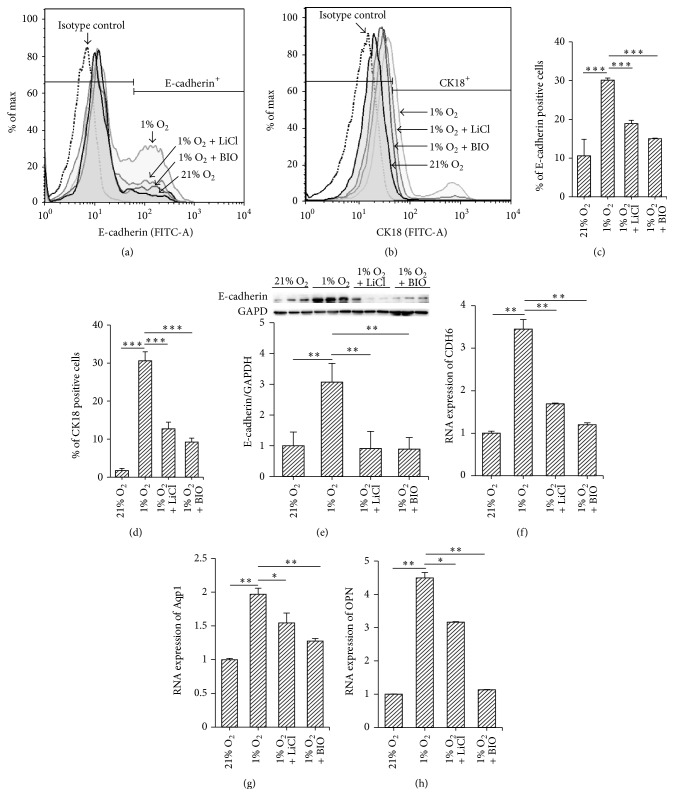Figure 5.
Stimulation of the Wnt/β-catenin pathway inhibited the differentiation of hypoxia-conditioned MMSCs. After MMSCs were cultured under normoxic (21% O2), hypoxic (1% O2) conditions or treated with LiCl (20 mM) or BIO (5 nM) for 3 days, detection of epithelial cell-related cell surface markers (E-cadherin or CK-18) was performed via flow cytometry. (a)-(b) Results of flow cytometry show that the number of epithelial cells was increased in hypoxia-cultured cells compared with those in normoxic conditions. Activating the Wnt/β-catenin pathway with LiCl or BIO attenuated the facilitatory effect of hypoxia on differentiation, as evidenced by a decreased percentage of E-cadherin and CK18-positive cells among LiCl- or BIO-treated cells. (c)-(d) Group data from flow cytometry. The data are shown as the mean ± SD. ∗∗∗p < 0.001, n = 3. (e) Expression of E-cadherin was detected by western blotting. The results show that 1% O2 increased and treatment with LiCl and BIO decreased the protein level of E-cadherin; ∗∗p < 0.01; n = 6. (f)–(h) Expression of CDH6, Aqp1, and OPN was detected by qRT-PCR; the result was consistent with that of E-cadherin; ∗p < 0.05; ∗∗p < 0.01; n = 3. Data are represented as mean ± SD.

